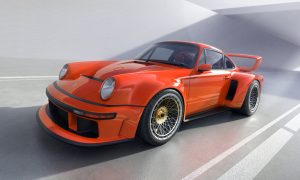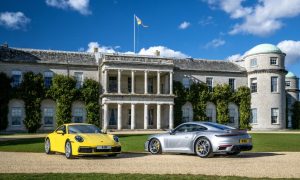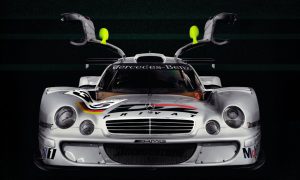The world’s most iconic sports car, the Porsche 911, is redefined about every seven years. This is no easy feat, as each new model must not only conform to ever tightening emissions, fuel economy and safety regulations, but must be faster and more competitive in motorsports. The 911 remains one of the most successful racing cars ever built, and for many, it’s not just a sports car from Porsche – it is Porsche.
Now, an all-new seventh-generation Porsche 911 Carrera has been unveiled. While the rear-engine replacement lacks serious controversy (the move from an air-cooled flat-six to water-cooled powerplant more than a decade ago was dreadfully traumatic), the new Type 991 presents altered proportions to improve passenger comfort, handling and stability. But don’t think for a moment that the 2012 model has gone soft. It is much more dynamic and capable than its predecessor. To substantiate the fact, Porsche divulges that its all-new Carrera S is capable of lapping the Nürburgring’s Nordschleife circuit in just 7:40 minutes. Not only is that 14 seconds faster than last year’s 997, but it matches the time of the race-ready Type 997 GT3. And that’s just the start.
Compared to last year’s 911 model, the new 2012 911 is .98 inches longer, .20 inches shorter in overall height and it has a wider track. Those dimensional changes are rather insignificant when compared to the wheelbase, which has grown by a whopping 3.90 inches. Putting more space between the wheels has shortened the front and rear overhangs and put more of the engine’s mass in front of the rear wheels. As a result, the 991 benefits from a lower center of gravity, improved stability at speed and more room carved out for passengers.

From 100 yards, only a Porsche purist will be able to distinguish a 991 from the 997 – that’s a compliment to the design team that worked exhaustively to maintain the 911’s traditionally characteristic appearance. Step a bit closer, maybe 30 feet away, and the changes are much more evident. The characteristic round headlights remain, but they have been pushed wide. The radiator intakes are larger with wrap-around LED directional indicators and the side mirrors have been moved from the mirror triangle at the base of the A-pillar to the top of the door (a location shared with the automaker’s Panamera sedan). The front windshield is flatter while the rear quarter windows are more tapered. The rear spoiler is now integrated cleanly with the decklid when stowed, but it presents a larger surface area when deployed. Overall, the appearance is more aggressive than that of the outgoing model while bearing more than a slight resemblance to the Carrera GT from the rear.
The new interior also takes many of its cues from its siblings, with the most notable change being the arrival of a tall center console, again mixing the design characteristics of the sporty Carrera GT with the luxurious interior of the Panamera. Directly in front of the driver, Porsche’s familiar five-ring cluster houses six analog gauges (tachometer, speedometer, oil pressure, oil temperature, water temperature and fuel level) and a new color TFT multifunction display to the right of the centrally-located and oversized tach. The navigation screen sits at the top of the center console, just below two of the four dash vents. Directly below are the NAV and audio controls. The console flattens out at that point, and the climate controls are in the crease with a monochromatic display of temperature settings for both driver and passenger. Just aft is the transmission shifter, whether manual or automatic, at a near-perfect height and distance from a relaxed arm. Lastly, a slew of buttons are located beneath the driver’s right elbow, controlling suspension, traction control, exhaust, rear spoiler, sunroof and other optional equipment.
Previous article
Used Cars Market in the UK: how to use second hand car websites



